New healthcare van to bring diagnostic services closer to home
A new mobile diagnostic service is ready to accelerate into Northland.
Te Whatu Ora Te Tai Tokerau’s new van, named Te Pahi O Ngā Iwi (The People’s Bus), was officially launched today by Minister of Health Andrew Little in Whangārei, before hitting the road to the region’s mid and far north to provide a range of diagnostic, assessment and treatment services for people, closer to their homes and without them needing to visit a hospital.
This includes echocardiograms to examine the structure and functioning of the heart. Echo ultrasound waves are turned into moving pictures of the heart that can be viewed on-screen. It plays an essential role in cardiovascular care, including early detection and treatment of heart disease.
The service will also provide other diagnostic services such as vascular (blood vessels) and ophthalmology (eyes) scans.
The van is a fully equipped diagnostic clinic, with a dual-purpose ultrasound scanner, computer, satellite dish, a bed, as well as air conditioning to keep patients and staff comfortable.
The mobile service will also incorporate telehealth technology, with the future goal to link with GP practices and rural hospitals.
Planned Care Initiative and Performance Manager Michaela Matich says the mobile service will help achieve a more positive health outcome for people, following timely diagnosis and the right pathway leading to earlier treatment.
Michaela says it also has the potential to address some of the health equity issues that have affected Te Tai Tokerau Northland communities.
“It will benefit our most vulnerable, our most deprived, to increase equity of care, improve the patient and whānau experience and their health outcomes.”
Mark McGinley, General Manager – Surgical and Support Services, said the project was made possible with funding gratefully received from the Ministry of Health.
“Thank you to all our staff involved, but especially to Michaela for being the driving force right through and making it happen,” he said.
Mark also thanked local Māori health and community health providers for supporting the initiative and contributing feedback to help it best serve people around the region.
“It’s really exciting to be part of something new and innovative. We hear the community voices that say ‘bring the health care to the people’ and that’s what this mobile diagnostic service is all about.”
Whangaroa Health Services’ Rural Outreach Health and Wellbeing Nurse Te-Warati Ututaonga-Pawa says they are excited by the launch of Te Pahi O Ngā Iwi.
“We know what a huge difference early diagnosis and interventions can make. In Whangāroa we are some distance from hospitals, and not everybody has access to reliable transport. Bringing the services closer to the people will improve health outcomes"
Shelly Poharama Hita, Clinical Manager with Te Kao-based Far North community health service Whakawhiti Ora Pai, says the value of the mobile diagnostic van aligns with their service’s name which means “a bridge to good health”.
“The mobile diagnostic van wears a simple heart situated on its bonnet; the depth of that heart is shown in the fruition of a vision that has been laboured over for many years.”
Based in Kaikohe, Te Hau Ora o Ngāpuhi Clinical Support Specialist Hemaima Reihana-Tait says the mobile diagnostic van will work towards the greater good and help to overcome hurdles of access to health care by bringing the services, expertise and support to the communities.
“Te Pahi o Ngā Iwi is an example of closing the health equity gap by bringing the mountain to Muhammed, to Hine, to Hone and all of us in the communities.”
Lorna Smeath, Clinical Lead for Te Rūnanga O Whaingaroa’s Kaupapa Māori Mobile Outreach Services, says “bringing diagnostic services to the people in their communities will make a huge difference”.
“This service will reduce the DNA (did not attend) rate, help families with travelling costs and reduce stress trying to get to the hospital. It will also reduce waiting times for appointments and provide a result that can make a differential diagnosis in determining whether to further investigate or to treat.”



Last modified:
